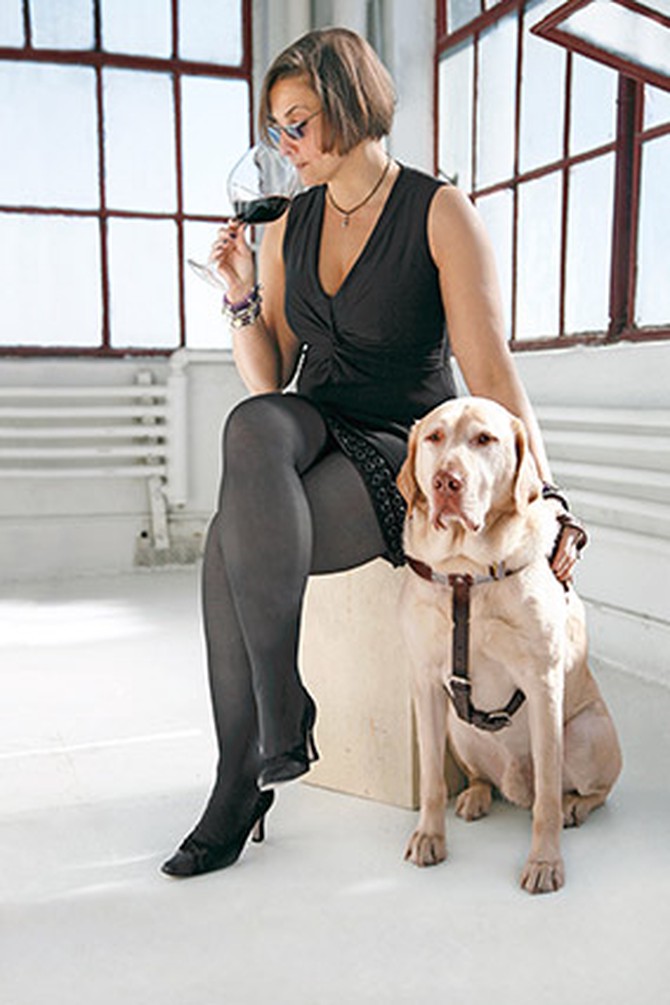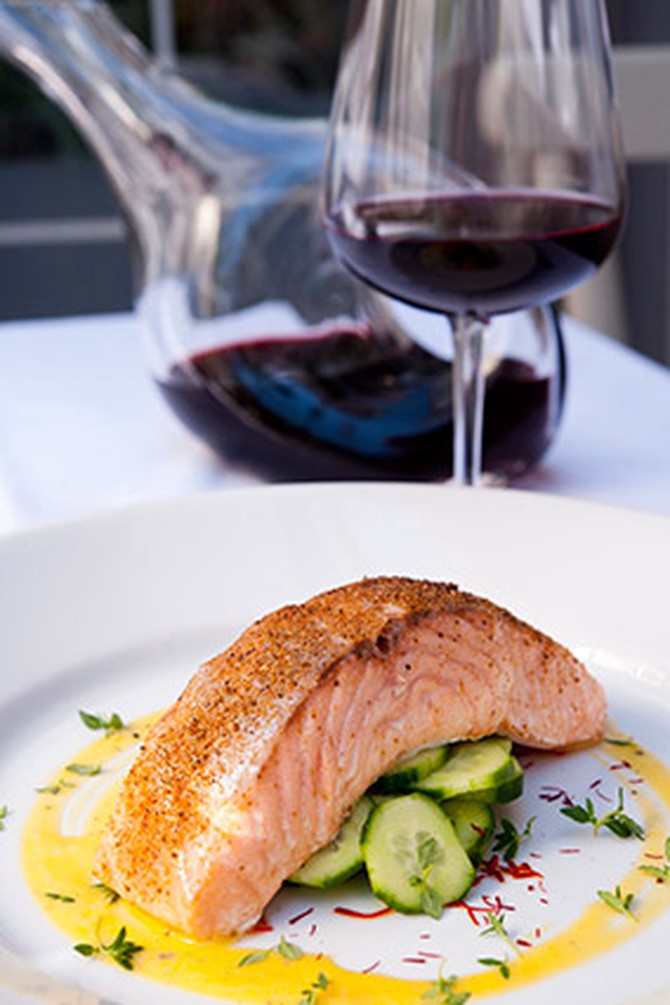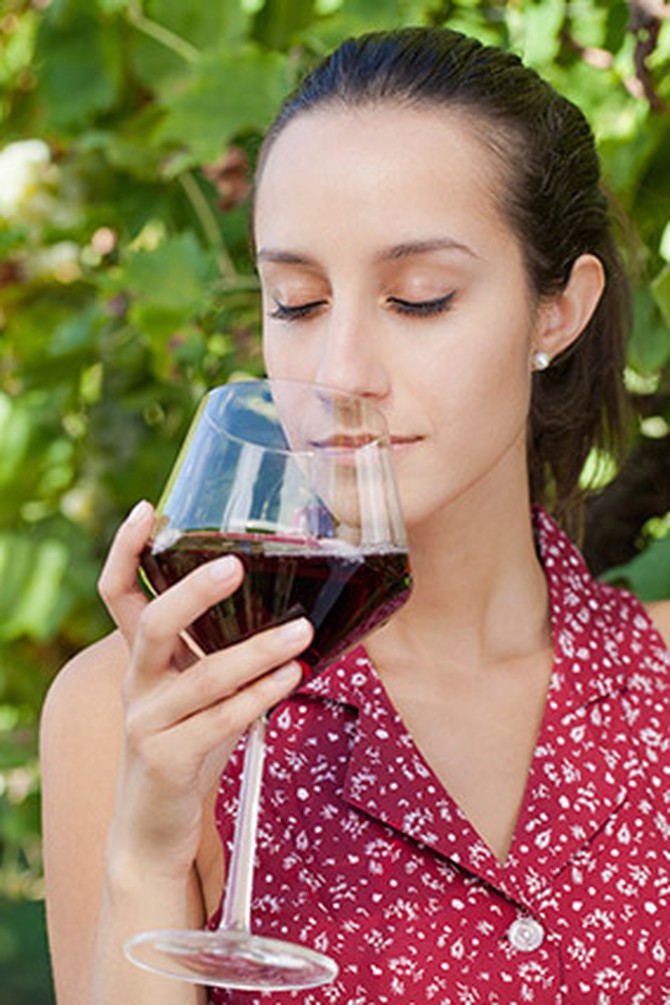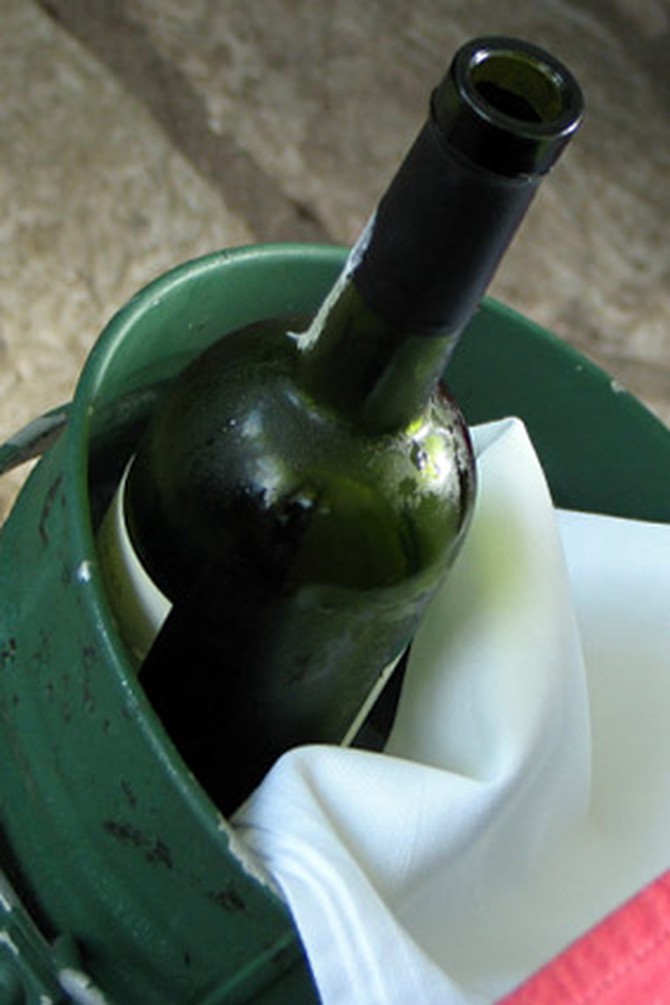The Nose Knows: Alex Elman's 3 Rules for Choosing Wine
After losing her vision at age 26, wine expert Alex Elman put her other senses to work.
By Leslie Goldman

Photo: Doug Holt Photography
Raised in New York City by a chef mother, an oenophile father (he planted himself a four-acre vineyard in Massachusetts), and a wine importer stepfather, Alex Elman sampled her first Bordeaux when she was 4. "It tasted a little sour," she recalls.
With a practiced palate, Elman was trading rare and fine wines by age 25—until complications from juvenile diabetes began to ravage her eyesight. Despite six surgeries in a single year, she lost her vision in both eyes. "During the recovery process, my stepfather would distract me by having me smell wines," says Elman, now 45. "He'd quiz me on the type of grape, where it was grown, the vintage. I discovered I could distinguish a bright wine from a dark wine, a 1990 Bordeaux from a 1992 Bordeaux."
Elman stopped mourning and started honing her olfactory talent, eventually establishing her own wine import business in 2002. Her specialty became organic, terroir-driven wines (harvested without chemicals or pesticides to reflect the climate and soil), which she "trekked the Andes in Argentina and weaved through rolling hills in Tuscany" to find. In 2010 she launched her own label, Alex Elman Wines, for which she handpicks Cabernets, Malbecs, Chardonnays, and more from family-owned vineyards in Italy and Argentina. (Shop her selection at AEWines.com.)
Jokingly calling herself the Blind Wine Chick, Elman travels the country for two to three weeks each month with General, her guide dog, promoting the brand and hosting tastings. She no longer considers her blindness a handicap. "Most people naturally close their eyes when tasting wine so they can better discern the flavors," Elman says. "Without my vision to distract me, it's all about my nose."
Next: Elman's three rules to sip by
With a practiced palate, Elman was trading rare and fine wines by age 25—until complications from juvenile diabetes began to ravage her eyesight. Despite six surgeries in a single year, she lost her vision in both eyes. "During the recovery process, my stepfather would distract me by having me smell wines," says Elman, now 45. "He'd quiz me on the type of grape, where it was grown, the vintage. I discovered I could distinguish a bright wine from a dark wine, a 1990 Bordeaux from a 1992 Bordeaux."
Elman stopped mourning and started honing her olfactory talent, eventually establishing her own wine import business in 2002. Her specialty became organic, terroir-driven wines (harvested without chemicals or pesticides to reflect the climate and soil), which she "trekked the Andes in Argentina and weaved through rolling hills in Tuscany" to find. In 2010 she launched her own label, Alex Elman Wines, for which she handpicks Cabernets, Malbecs, Chardonnays, and more from family-owned vineyards in Italy and Argentina. (Shop her selection at AEWines.com.)
Jokingly calling herself the Blind Wine Chick, Elman travels the country for two to three weeks each month with General, her guide dog, promoting the brand and hosting tastings. She no longer considers her blindness a handicap. "Most people naturally close their eyes when tasting wine so they can better discern the flavors," Elman says. "Without my vision to distract me, it's all about my nose."
Next: Elman's three rules to sip by

Photo: Thinkstock
1. Buck the Cliché
"The whole 'white with fish, red with meat' thing is tired," Elman says. "Red Burgundy is even paired with sushi now." To bring out complex flavors in your food, drink a lighter, unoaked red (Pinot Noir or Sangiovese) with fish and a heavier white (aged Chardonnay or dry Riesling) with steak or pork.

Photo: Thinkstock
2. Swirl, Sniff, Then Sip
"Wine tasting is all about smell," says Elman. Close your eyes and swirl the glass to oxygenate the wine and unlock its vapors. Inhale through your nose and sip, bringing air into your mouth. Repeat twice more. "Lots of flavors will come out: berries, coffee, herbs, even what we call barnyard."

Photo: Thinkstock
3. Keep It Cool (Even Red)
For the best flavors, serve red slightly chilled: If you don't have a wine refrigerator, put the bottle on ice for ten minutes before serving. Sipping a white ice-cold dulls its nuances; pour it, then let it sit for five minutes. The optimal range for red is 55 to 65 degrees; for white, 45 to 55 degrees.
Next: 6 wine myths—debunked!
Next: 6 wine myths—debunked!
From the August 2013 issue of O, The Oprah Magazine

